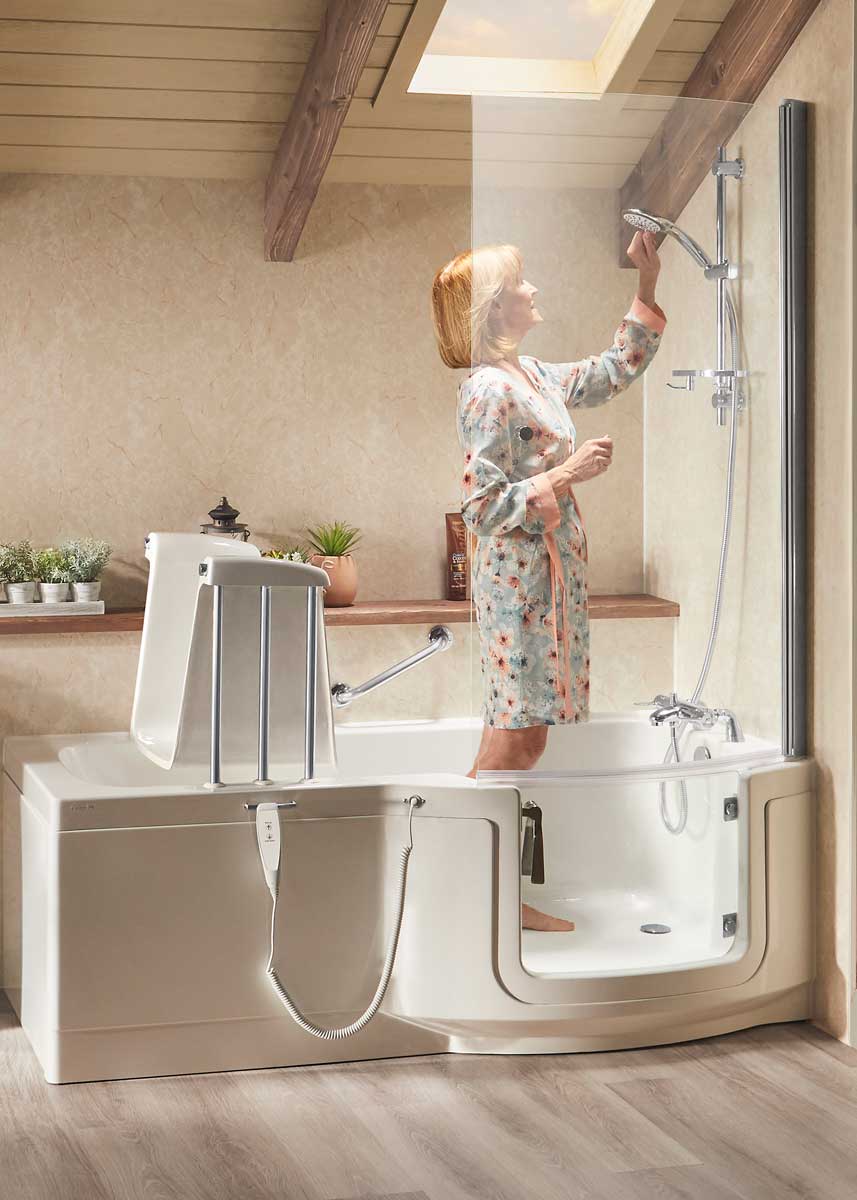Creating a home that feels safe and comfortable becomes increasingly important as we age or care for loved ones with mobility challenges. Walk in baths offer a practical solution, making bathing easier while adding a touch of comfort. Upgrading your bathroom to suit all ages and abilities can improve daily routines. A warm bath designed for accessibility provides relaxation and therapeutic benefits. Choosing the right options can make a significant difference in your home’s overall comfort.
The Benefits of Accessible Bathing Solutions
Accessible bathing is essential for individuals with limited mobility, particularly seniors and those with disabilities. The primary benefit is safety, with features such as non-slip surfaces, built-in handrails, and low-step entry to prevent falls. A well-designed bathroom with a walk in bath allows users to bathe independently, reducing the need for assistance and preserving their confidence.
Beyond safety, these baths enhance comfort and relaxation. They often incorporate therapeutic features like hydrotherapy jets to help with muscle pain, arthritis, and circulation issues. By simplifying the process, they also ease the stress of bathing for both users and caregivers. Accessible bathing solutions support ageing in place, allowing individuals to remain in their homes longer without compromising their well-being.
Enhancing Safety and Comfort with Walk In Baths
Walk in baths are designed to meet a variety of needs, combining accessibility and comfort. These baths feature low thresholds, allowing easy entry without the need to step over high barriers, which is crucial for those with mobility challenges. Many models also include slip-resistant surfaces, built-in grab bars, and ergonomic seating to provide added security and convenience.
For individuals who struggle with balance or coordination, these features are essential in preventing accidents and promoting confidence in daily routines. Investing in these modifications transforms a bathroom into a safer space, enabling seniors and those with mobility limitations to bathe independently with ease.
Beyond functionality, modern designs blend seamlessly with various bathroom aesthetics. Available in a range of styles and finishes, they enhance both accessibility and visual appeal. Many models also offer advanced hydrotherapy options, which can help relieve joint pain, improve circulation, and support relaxation.
Transforming Your Bathroom: Design Considerations
Bathroom design plays a crucial role in successfully incorporating accessible bathing solutions. Factors such as layout, lighting, and colour schemes influence both functionality and aesthetics. A well-planned space ensures ease of movement while enhancing comfort and relaxation.
Choosing a calming colour palette can create a soothing atmosphere. Soft shades of blue, green, or neutral tones promote relaxation, while subtle accent colours can add warmth and character. Natural light also plays a key role in improving the bathing experience. Adding windows or skylights can make the space feel more open and inviting while reducing the need for artificial lighting.
Accessories such as plants, artwork, or textured elements can enhance the ambience, making the bathroom feel both stylish and comfortable. Functional additions like non-slip flooring, well-placed grab bars, and smart lighting solutions improve safety without compromising design.
Homeowners should also consider the size and layout of their bathroom when selecting the right features. Whether opting for a contemporary, traditional, or minimalist design, it’s important to ensure that the chosen model integrates smoothly into the space. Thoughtful planning allows for a balance between accessibility and style, making the bathroom a practical yet elegant retreat.
DIY Projects for Bathroom Renovation
For those who enjoy home improvement, DIY bathroom renovations can be both rewarding and budget-friendly. Even small upgrades can enhance both the look and practicality of the space without requiring a full remodel.
A simple yet effective project is updating fixtures and fittings. Replacing an outdated sink, faucet, or cabinet hardware can refresh the space instantly. Choosing moisture-resistant materials for surfaces, such as waterproof paint or tile, ensures durability while maintaining a clean and modern appearance.
Adding accessible storage solutions is another valuable upgrade. Installing shelves, cabinets, or recessed storage within easy reach improves organisation and convenience. This is especially helpful for individuals with mobility challenges, as it reduces strain and minimises the risk of slips and falls.
Lighting is another aspect to consider. Swapping old light fixtures for brighter, energy-efficient options can enhance visibility and create a welcoming atmosphere. Additionally, incorporating anti-slip flooring or bath mats adds an extra layer of safety, making the bathroom more user-friendly.
Tackling small-scale renovations not only boosts the functionality of your bathroom but also adds personal satisfaction. These DIY projects improve accessibility, organisation, and aesthetics, making your bathroom a more comfortable and stylish space.
The Role of Hydrotherapy in Walk-In Baths
Hydrotherapy is a powerful yet often overlooked feature of walk-in baths, offering both relaxation and therapeutic benefits. Warm water immersion improves circulation, reduces muscle tension, and soothes joint pain, making it especially beneficial for individuals with arthritis, fibromyalgia, or chronic pain conditions.
Modern designs often include hydrotherapy features such as adjustable water jets, heated seating, and air massage systems. These elements allow users to customise their bathing experience, targeting specific areas of discomfort and enhancing overall relaxation. The gentle pressure from water jets can help loosen stiff muscles, alleviate soreness, and promote faster recovery after physical exertion.
Beyond physical relief, hydrotherapy supports mental well-being. Warm water has a calming effect, reducing stress, promoting better sleep, and enhancing mood. The sensation of weightlessness in water can also provide a meditative experience, helping individuals unwind from daily stressors.

